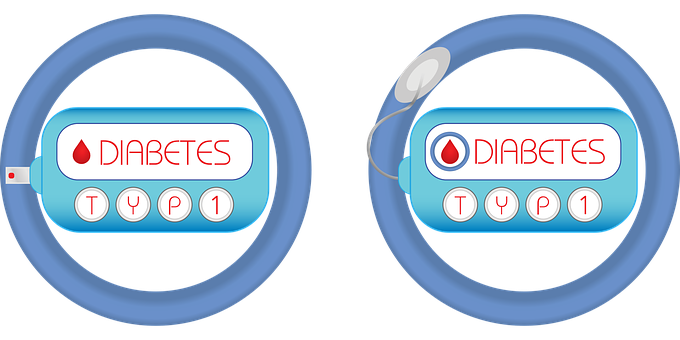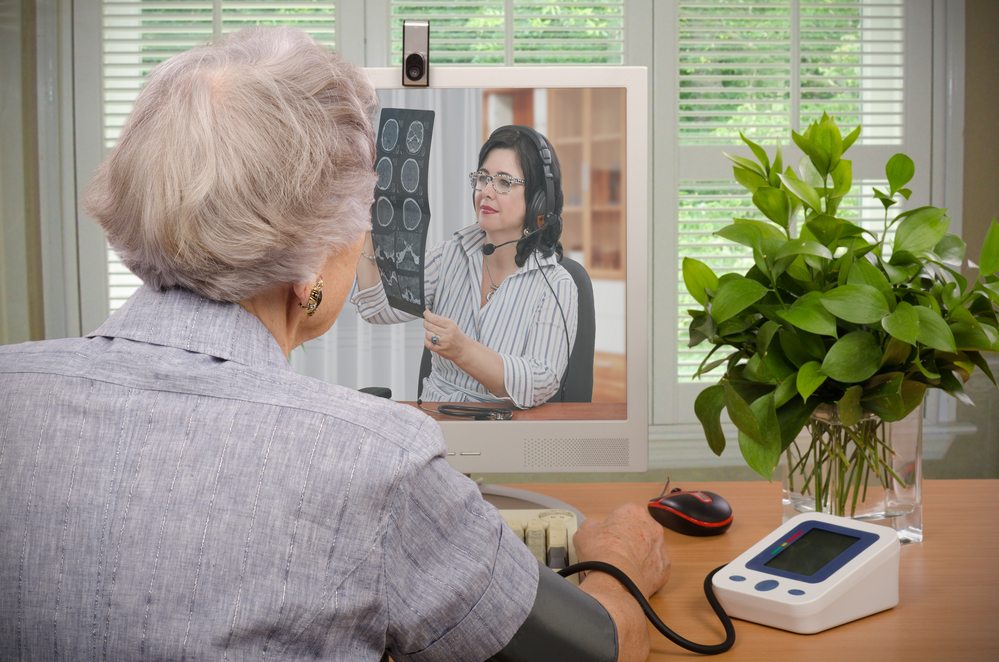Diabetes is slowly evolving into a global pandemic. It is expected that diabetes will become more widespread, jumping from 4% in 1995 to 5.4% by the year 2025. The World Health Organization anticipates that the majority of new diabetes cases will be seen in developing nations.
Diabetes is a chronic disease that occurs either when the pancreas does not produce enough insulin or when the body cannot effectively use the insulin it produces. There are multiple contributing factors that can lead to complications if the condition is not taken care of.
Hence, dealing with it could require a multi-pronged solution. Your doctor can help you set up a course of treatment if you are diagnosed with diabetes. There are some lifestyle changes you can make to help your health even with a diabetes diagnosis.
Symptoms of Diabetes
If you have diabetes, you might experience the following symptoms:
- You might feel weak and experience tiredness
- You might have an urge to frequently urinate
- You might feel thirsty more often
- You might experience blurring of vision
- You might notice an unplanned loss of weight
- You might notice that sores or cuts heal slower
Other symptoms that you might notice are:
- Men might notice a decrease in the sex drive, decreased muscle strength or erectile dysfunction.
- Women might notice frequent urinary tract infections, yeast infection and dry and itchy skin.
READ MORE: The Price Of Diabetes
Causes of Diabetes
The digestive system breaks down the food we consume into its individual nutrients. Food-derived carbohydrates are converted to glucose (sugar) that needs help to get transported to the cells.
The pancreas secretes a hormone called insulin, which is integral in helping cells take in glucose. This hormone contributes to the transport of glucose to cells.
In diabetes, there can either be an inadequate production of insulin from the pancreas leading to insulin-resistance in the cells (Type 2 diabetes) or the pancreas may not produce insulin at all (Type 1 diabetes).
Diabetes results from a rise in blood sugar levels. Yet, various causes can contribute to the emergence of diabetes.
Home Remedies for Diabetes
Approximately one out of every ten individuals in the United States have diabetes, and this proportion rises with age. Research is being conducted in many places globally to try and deal with diabetes, however more studies need to be done to determine results.
At this point, what the data shows is that certain treatments may be useful for diabetes sufferers. It is important to stress that diabetes is a serious ailment that should be identified and treated by an expert medical physician.
1. Stress Management
The amount of stress you have can have an effect on the sugar levels in your bloodstream. Emotional strain results in the release of hormones, including glucagon and cortisol. These hormones raise the blood sugar level.
Exercise and relaxation techniques like yoga and meditation can assist in relieving stress and promote better insulin production in people suffering from continuing diabetes.
A likely explanation for an increase in blood sugar may be due to stress. Discovering techniques for controlling tension could prove to be advantageous in such circumstances. Breathe deeply, go for a stroll, practice meditation, exercise, engage in an activity you like, garden, or play your favorite tunes as a way to reduce stress.
Visiting a psychological therapist and requesting assistance would be an advantageous first step in handling stress better. For this reason, it is wise to talk to your physician and decide together what the best way is to manage your stress.
2. Eating Right
It is a good idea to speak to a medical professional or a dietitian to work out a nutrition program that is best for your specific health needs. Your medical practitioner could suggest you to include in your diet items laden with fiber, such as whole grains, fresh fruits, and vegetables, etc.
They might suggest drinking water instead of sugary drinks like juice and soda. Your doctor may determine that specific nutritional modifications can be helpful in managing diabetes.
READ MORE: The Complete Diabetic Food List
3. Exercise
According to the American Diabetes Association exercise increases your insulin sensitivity. During and after activity your cells find it easier to intake any available insulin. As your muscles contract during exercise they are able to take up glucose even without insulin being present. This is great news.
Regular exercise has been shown to lower your A1C.
Your medical professional could advise that you stay energetic a lot of the days and also work out consistently to remain in terrific shape. Losing weight if you are overweight, keeping it off, and managing blood sugar levels could all be improved by following this advice.
You can commence your workout regimen by making a habit of taking regular, brief strolls throughout the day. Afterwards, you may want to enhance your workout program by engaging in different types of activity such as yoga, resistance bands, and so on.
Working out on a regular basis can help you shed extra pounds and improve your body’s ability to respond to insulin. Your body has the ability to use the glucose in the blood more effectively when your insulin levels are higher.
Participating in frequent physical activity helps keep your muscles in shape, allowing them to utilize the glucose in the bloodstream for energy and preventing them from weakening.
Keep track of your blood glucose numbers every day so that you can comprehend how different activities have an influence on your blood sugar levels and aid you in keeping your blood sugar levels within a regular range, neither excessively high nor too low.
4. Onion
A study involving rabbits as the test subjects discovered that powdered onion could have properties which help to lower blood sugar levels (anti-hyperglycaemic). Research done on rodents has hinted that a bioactive substance present in onions could have a potential to reduce the amount of blood sugar.
An investigation on those with diabetes demonstrated the capability of onion juice to bring down blood sugar levels.
5. Bel
The scientific name for Bel, also referred to as Bengal quince or Bilva, is Aegle marmelos. It was revealed in research that the leaves of the bel tree might be capable of decreasing the level of sugar, urea, and cholesterol in the blood.
It may also be beneficial in preventing a spike in blood sugar that typically takes place after eating. More research needs to be done to confirm the benefits of this possible natural remedy for diabetes. Please do not use it without consulting a doctor.
6. Neem
Research in animals suggests that the use of neem may assist in reducing blood sugar levels.
It might assist in augmenting the transportation of glucose into cells and storage of glycogen (macromolecule which includes glucose) in rats. Still, further research involving people needs to be conducted to explore the potential of neem for treating diabetes.
7. Babool
Its scientific name is Acacia arabica. It is a widespread occurrence in India in its natural state. This could potentially act as a anti-diabetic agent by stimulating the production of insulin and therefore decreasing blood sugar levels.
Research done on animals has shown that babool seeds may have the ability to lower blood sugar levels by interfering with pancreatic cells, which could potentially lead to more insulin production. Further research needs to be done in order to prove the assertions, so it would be advisable to speak to a physician.
8. Aloe Vera
Aloe vera could potentially be of aid when it comes to controlling diabetes. Research concerning animals has suggested that aloe vera can potentially reduce the levels of sugar in the blood, as well as increase the cells’ ability to make use of glucose.
The release of insulin from pancreatic cells could possibly be affected. Although there is some hope that aloe vera could be used to treat diabetes, further studies must be done in order to prove that fact. Therefore, please consult a doctor.
9. Basil Leaves
Basil works to reduce blood sugar by boosting insulin levels in the bloodstream. It can be consumed either as a meal or as a supplement. Consuming basil powder with a dosage of 2.5 grams each day, or munching on five to eight leaves of the herb in the morning on an empty stomach on a regular basis, is suggested.
10. Fenugreek
Fenugreek is a readily available fibrous herb that possesses the ability to reduce blood sugar and revive the body’s glucose tolerance. Soak two tablespoons of fenugreek in cold water overnight.
Consume this beverage on an empty stomach each morning for the best outcome. You could grind the seeds into a powder and incorporate it into your daily milk intake by adding two tablespoons of fenugreek powder.
11. BlackBerry
Blackberries, often referred to as black plums, are the most commonplace seasonal fruit found in the marketplace. It has the capability to convert starch into energy and bring down levels of glucose in the blood. It controls the problem of frequent urination under control. Blackberry can be eaten as a fruit directly.
12. Guava
Guava has a high content of dietary fiber and can help reduce the amount of sugar your body absorbs if it is eaten without the peel.
13. Control Carb Intake
The body breaks down carbohydrates into glucose, with insulin transporting the glucose into the various cells of the body. Consuming large amounts of carbohydrates can cause problems with the performance of insulin and lead to an increase in blood sugar levels.
You can manage your amount of carbohydrates by either tracking them or utilizing a food swap structure. A low-carb diet can lower your blood sugar levels.
14. Increase Fiber Intake
Eating more fiber can help facilitate the breaking down of carbohydrates and the uptake of sugar into cells. Eating a lot of foods with a lot of fiber can help manage type 1 diabetes by keeping the blood sugar levels in check. Foods like vegetables, fruits, legumes, and whole grains are examples of food items that are high in fiber.
15. Karela and Amla Juice
Amla contains a mineral called chromium. This mineral has the capability of boosting insulin levels as well as enhancing the way carbohydrates are used by the body.
Karela is the best home remedy for diabetic patients. Karela remedy is also suggested by experts. Eating karela and amla is an excellent home remedy for people with diabetes.
16. Drink Water
Lack of hydration is a leading cause of elevated blood sugar. Drinking water is better than soda or soft drinks. Drinking water is helpful to fight against diabetes.
17. Mango Leaves
Mango leaves appear to increase the amount of insulin hormone, thereby preventing the breakdown of glucose. Mango leaves control your blood sugar levels. You can put three to four mango leaves in boiling water and then consume the liquid.
18. Cinnamon
The bioactive compound present in cinnamon helps to reduce the risk of diabetes by inhibiting its effects. The bioactive compound present in cinnamon helps to improve insulin activity, thus keeping blood sugar levels in check.
READ MORE: Top 12 Cinnamon Health Benefits
19. Mud Therapy
Mud therapy involves utilizing the humid soil in order to remediate various physical issues. It is an old-fashioned technique. These days it is widely used by naturopathy practitioners.
This treatment works to even out the dysregulation between the digestive system and the endocrine organs of people with diabetes, which is an underused approach. This therapy helps rid the body of toxins. Mud can be used to successfully treat the side effects of diabetes.
20. Hydrotherapy
Water has been used in various cultures around the globe for treating ailments and wound care. Hydrotherapy is any method that uses water to treat a variety of symptoms throughout your body. Hydrotherapy is an increasingly popular form of symptom relief for lots of conditions and issues.
A good portion of our physique is comprised of water, so it is an excellent way to take care of our well-being.
Hydrotherapy can be as simple as a bath or shower or taken as an internal enema. A mixture of lukewarm water and an enema is made, which flushes out built-up toxins from the body.
21. Cold Exposure
Taking a dip in chilly water boosts blood flow and has benefits to overall health. Cold exposure does have some health benefits according to research.
22. Massage Therapy
Massage therapy is a great way to manage diabetes. Massaging the insulin injection site improves insulin action.
This type of treatment assists in lowering blood glucose concentrations, decreasing Hemoglobin A1C amounts, improving diabetic foot lesions, and alleviating pain connected to peripheral neuropathy. A trained massage professional can focus on the lymphatic system, which can bring about positive results.
23. Sun Bath
Taking a sunbath has been linked to helping in the treatment of numerous ailments and cleaning out the body. Being exposed to sunlight is necessary for the synthesis of Vitamin D in our systems.
Taking in sunrays can be linked to a decreased risk of getting type 2 diabetes. But sunbathing should not be done for an extended amount of time. It is recommended to limit sun exposure to 15 minutes or less per day.
24. Morning Walk
Doctors have long suggested that taking a stroll in the morning is a great way to stay healthy. This is an ideal workout that anyone and everyone, regardless of age, gender, or body type can take part in.
Diabetics should take a vigorous walk of half an hour to 45 minutes to control their blood sugar levels. Going for a vigorous walk can increase your heart rate and improve the performance of your internal body parts, specifically your endocrine system.
Conclusion
Plants have been used as traditional medicine since the beginning of time. Current diabetic medications come with some side effects that are not ideal. Taking advantage of the antidiabetic activity of plants can help improve diabetic outcomes. Consumption of beverages such as aloe vera, karela, amla, and mango juice can be beneficial to your health.
Maintaining a healthy activity level can also improve weight and diabetes. Sticking to a regular exercise regimen and keeping stress at bay are key components of living a healthy lifestyle.
The permanent treatment for diabetes is healthy eating. A healthy diet also lowers the dangers of illnesses like cardiovascular issues, renal disorders, and liver disease.
Consult a health care professional before devising a dietary regime to manage diabetes.









